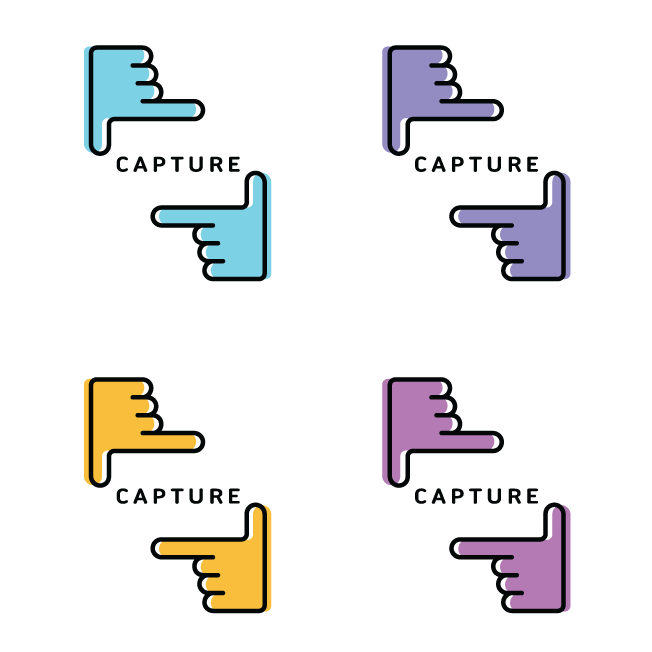A video script is essential to your production. It keeps your crew on the same page, organizes your information and makes your message more persuasive. But it can be a daunting task for new writers and even experts unfamiliar with video.
Not to worry! We’re going to teach you the quick and easy way to write an engaging video script, even if the most inspired thing you’ve ever written is a to-do list!
Get ready for a crash-course in what a script is, why you should write one, what to include and how to format a script. Let’s dive in!
 Conquer the blank page with a captivating intro. Illustration by Vladanland.
Conquer the blank page with a captivating intro. Illustration by Vladanland.
What is a video script?
—
A video script is the written document containing directives for the actors and instructions for filming—including sound effects, graphics, visual and audio information.
If your video production is a train, the script is the track guiding your train to its destination.
Why write a video script?
—
Can’t you just wing it? You can, but chances are your video will fail to meet its potential, at the very least. Scripts ensure that you present everything you plan to in a tight and efficient way. Without a script, your message will be unorganized, not as well thought out and unpersuasive. Not only that, you’ll be making more work for yourself in post production when you’ll have to edit out the awkward pauses and restructure the clips so that your point isn’t getting lost. Today’s viewer has a short attention span, and you can’t afford to waste their time with poorly planned content.
 By Yo!Design
By Yo!Design
By increasing the efficiency of your message delivery, you’re also ensuring higher viewer engagement—which means they’ll watch for longer and leave comments or likes. All of this translates to a higher ranking on YouTube, which leads to more views through suggestions and search, and the cycle goes on and on.
Contrary to what you might think, you don’t have to stress about memorizing if you write a script, and that’s thanks to the teleprompter. This is a device that projects your script so you can see it, but the audience can’t. Even professional actors use teleprompters, so don’t strain yourself remembering your next line. It’ll come across on camera. That’s not a good look!
How to script a video
—
Brief
A brief is a simple document answering the questions: What’s the topic? What’s the video’s goal? Who’s the audience? What should viewers take away? The answers to these questions will put you back on track if you get derailed.
Outline
 An outline can be a beautiful thing. By ParaMonster.
An outline can be a beautiful thing. By ParaMonster.
The outline is the underlying structure of your script.
There are a number of different formats for outlines, but a traditional bullet-point structure works just fine. All that matters is being able to quickly scan and know whether your message flows logically or whether you’ve missed anything important. In general, you want to have no more than three to five major points, or you risk swamping the viewer with too much information.
Keep in mind that it is a lot easier to edit an outline than a fully formed script, so catch mistakes early on. Get feedback from people whose opinion you trust. Allow yourself time to walk away and come back to the outline with fresh eyes.
Dialogue
Once you’re done outlining, you’re ready to turn your bullet points into full sentences of simple dialogue. We’ll get into what exactly to include over the next few sections, but it is important to pin down your voice early on. Find a compromise between writing how you talk and how your viewers talk. Not sure how your viewers talk? Find out what they buy, then go to Amazon under those products, and observe how they write in the customer reviews section.
The hook
The purpose of the hook is to grab the viewer’s attention right away and keep it. Picture how an actual fishing hook works. It’s designed so that once it goes in, it can’t be removed. Similarly, if you’ve written a good hook, you should have the viewer’s attention for the longterm—at least until they get what they’re looking for. Just make sure you don’t forget to deliver on that end.
There are basically two types of hooks: the straight hook, and the in medias res hook.
The straight hook is pretty simple. You just tell viewers they’re going to get what they came for. Unlike someone flipping through channels on TV hoping to find something of interest, the internet viewer is actively looking for something specific. The straight hook lets them know they’ve found it and can stop searching.
 A good script grabs the viewer’s attention. By Straw Effigy.
A good script grabs the viewer’s attention. By Straw Effigy.
In medias res is Latin for “in the middle of the action.” So for this kind of hook, start with the most exciting moment and then explain how you got there. If you’re doing an explainer video about how to build an underground house and swimming pool, start with the glorious end result, so viewers can say, “OMG, I want that!” BOOM! They’re hooked. Now, go back to the beginning, and they’ll probably watch the whole process because they’ve got a picture of how phenomenal it’ll look seared into their brains!
Whichever hook you choose, do so before your standard video opening sequence if you have one. This will allow the viewers to instantly connect with the content you have to offer.
The introduction
The introduction contains the hook as well as some more detailed information to help viewers understand the nature of the content they’re about to see. Most importantly, it should establish the takeaway. This is similar to the in medias res hook, but it is more descriptive and more focused on creating clarity than on grabbing attention.
With this and the hook, your viewers are emotionally engaged now, and it’s time to back up those emotions with some facts—that is, establish your credibility and why they should listen to you. Tell them who you are, what you do, and whatever credentials you have.
 By BroomvectoR
By BroomvectoR
There are two main ways to establish your credibility: first, give them reliable and believable background on yourself, like letting them know you’re a doctor who’s been a successful practitioner for 40 years, and second, use testimonials from real people. And when you quote people, mention their profession and where they live, so they seem more like real people.
However you choose to establish your credibility, keep it short. Nobody wants to hear a boring monologue about how you were at the top of your Harvard graduating class. Pretend you’re on an elevator and need to establish your credibility before the doors open.
Keep the momentum going by directly addressing your viewers with your first engagement. If you’re on YouTube, don’t assume your viewers are YouTube savvy. Tell them what to do: ask them to subscribe to your channel, or click the link to your other videos, etc. You’ll directly engage your audience two more times during your video, so this first engagement is the planting of the seed.
The body
 By DreamMaster
By DreamMaster
With all that preamble out of the way, it’s finally time to give the viewers what they came for. The sooner they get it, the more engaged they’ll be. And when it comes to keeping viewers engaged, simplicity is key.
If you followed our advice on the outline phase, you should have three to five major points to cover throughout this section. While this provides clear organization and will keep the viewer from getting lost, make the information compelling. Tell a story. This is the part where you should pull out all the stops to entertain the viewer.
In addition to this, have some factual examples or some data to back it all up. Viewers might forget the finer details of your video, but they are more likely to remember a gripping anecdote or a crazy statistic.
Midpoint engagement
The middle of your video is like Wednesday—gotta get your audience over that hump. That means it’s time to directly engage them a second time. But make sure it’s not the same as your first engagement. Pose a question and have them write the answer in the comments section. The question can be something as simple as, “What do you think about [advice I just shared]? Agree or disagree?” For folks who may be comment shy, you can always ask for feedback on your content. As the saying goes, everyone’s a critic.
The call-to-action (CTA)
When you’re done presenting your content, you want people to convert.
 Make sure your viewers are ready for their closeup. By minimalexa.
Make sure your viewers are ready for their closeup. By minimalexa.
Make your CTA as specific as possible. Different from the midpoint engagement, this can be the same thing you asked them to do in the first engagement. One task is best, but if you have a few CTA’s, then again, make sure they’re simple: “Visit my website www…”, “Hit the subscribe button below”, and “Leave a comment”.
You could also invite them to join you on your FB group, your email list, and other social platforms to help build those too. Your audience wants to keep track of you and build a connection with you. But you need to reach out with an invitation.
The other tactic at work here operates undercover. This will be the third time you’ve asked your viewers to engage. And you know what they say: third time’s a charm!
Sign-off
In the intro, you introduced yourself, so it’s good manners to give a proper sign-off. Say goodbye, and thank the audience for investing their valuable time and energy in you. If it fits your style and it’s genuine, have a catchy sign-off. It adds memorability in a sea of similar products and services. It can also be free advertising. If you have a catchphrase that your viewers adopt in their everyday lives, it can become an ear-worm!
How to format a video script
—
Now that you have your spoken content down, there are only a few elements missing from your video script: camera angles, sound effects and graphics (or your bumper), and any inserts (B-roll) you might have. You’ll add those elements a little differently depending on which script format you choose.
 via Pixabay
via Pixabay
There are many ways to format your video script. If you have as many moving parts in your video as a full-on movie or TV show, you might want to do a traditional film script. Download Final Draft or some other feature-film script formatting software (some of these programs have cheaper mobile versions) because film/TV scripts have a very specific formatting style (all the way down to the industry standard Courier typeface). But, if you’re a general YouTuber or a business owner wanting to create simple content for your company, you don’t need to get that technical. Short video script formats are less formal.
 Black Corona typewriter, photo by Peter Pryharski via Unsplash
Black Corona typewriter, photo by Peter Pryharski via Unsplash
There are three typical formats for writing a video script: Audio/Visual (AV), Visual/Audio/Graphics (VAG), and Sequential flow. If you’re doing an interview or simple explainer, AV should work fine. It’s two columns: one for what we’ll see (video), and one for what we’ll hear (audio). Download a template for that technique here.
For more complex or graphics-heavy explainers, VAG might be your best bet. That’s three columns: you guessed it, video, audio and graphics.
If these formats don’t appeal to you, you can do the Sequential Flow style: a top to bottom list of what will happen from start to finish. You don’t break the page into columns for this one. You simply start at the top of the page and list what will happen in your video until the end. Here’s another template for that technique.
Time to stop stalling and write your video script
—
So that’s the process of how to plan a video script in a nutshell! Now you know what a script is, why you should write one, how to write a video script and how to format a video script. You’ve got no more excuses, so get writing!
Remember, your product or service is important to your audience. They’re out there looking for you. Give them what they want!


 By
By